Dodge Journey: Manifold, exhaust, rear
Removal
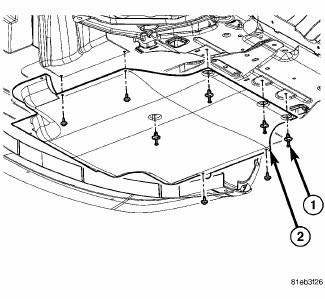
Fig. 305: Belly Pan
- - belly pan fasteners
- - belly pan
1. Remove the belly pan (2).
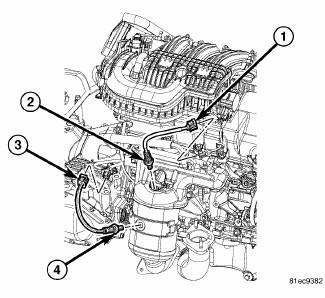
Fig. 306: Oxygen Sensors
2. Remove the oxygen sensors (2) and (4).
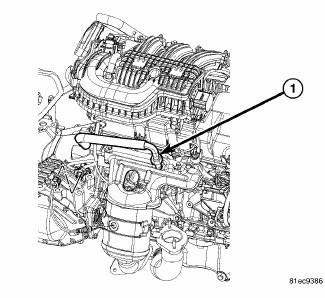
Fig. 307: Exhaust Gas Recirculation Tube
3. Remove the EGR tube (1).
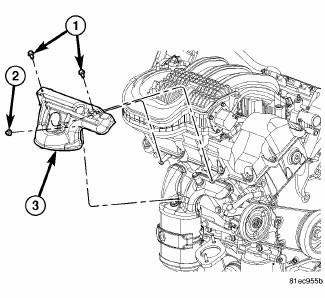
Fig. 308: Rear Maniverter Heat Shield
4. Remove the rear maniverter heat shield (3).
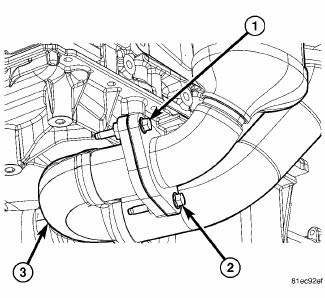
Fig. 309: Exhaust Cross-Under Pipe
5. Remove the rear maniverter-to-crossunder fasteners (1) and (2).
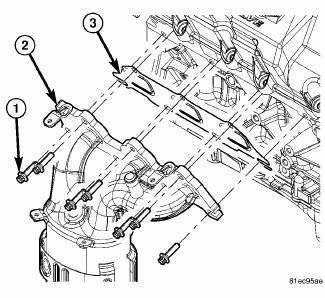
Fig. 310: Rear Maniverter Fasteners
6. Remove the rear maniverter fasteners (1), and the rear maniverter (2).
Inspection
1. Inspect exhaust manifolds for damage or cracks.
2. Check manifold flatness.
3. Inspect the exhaust manifold gasket for obvious discoloration or distortion.
4. Check distortion of the cylinder head mounting surface with a straightedge and thickness gauge.
Installation
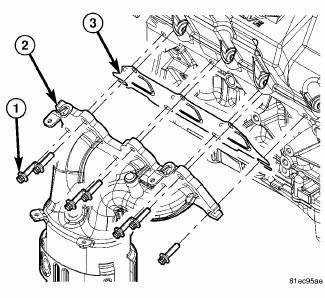
Fig. 311: Rear Maniverter Fasteners
1. Install the rear maniverter gasket (3), the rear maniverter (2), and the rear maniverter fasteners (1).
Tighten the rear maniverter fasteners to 23 Nm (17 ft. lb)
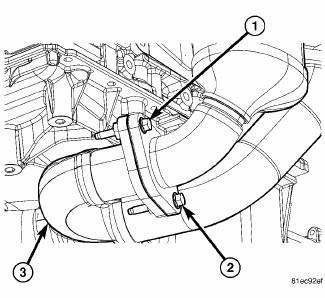
Fig. 312: Exhaust Cross-Under Pipe
2. Install the rear maniverter-to-crossunder fasteners (1) and (2). Tighten to 29 Nm (21 ft. lb.).
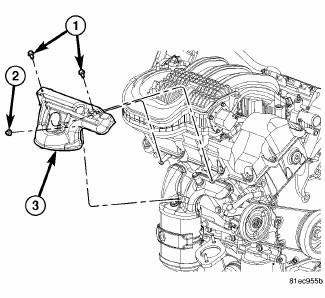
Fig. 313: Rear Maniverter Heat Shield
3. Install the rear maniverter heat shield (3). Tighten fasteners to 12 Nm (106 in. lb.).
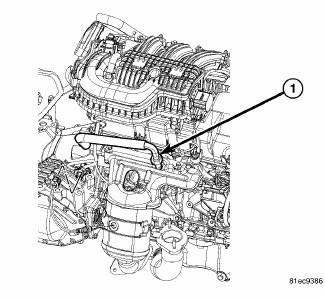
Fig. 314: Exhaust Gas Recirculation Tube
4. Install the EGR tube (1).
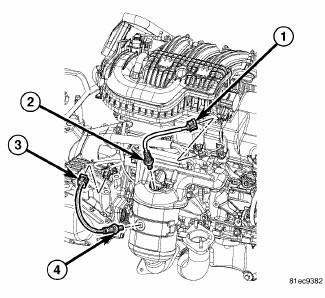
Fig. 315: Oxygen Sensors
5. Install the oxygen sensors (2) and (4). Tighten to 41 Nm (30 ft. lbs.).
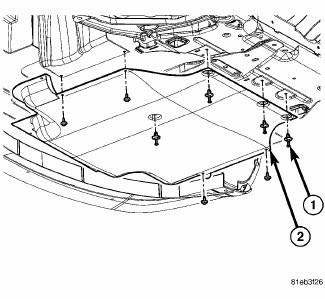
Fig. 316: Belly Pan
- - Belly Pan Fasteners
- - Belly Pan
6. Install the belly pan (2).
 Manifold, exhaust, front
Manifold, exhaust, front
Removal
1. Disconnect negative battery cable.
2. Remove the engine cover.
Fig. 295: Oxygen Sensors
3. Disconnect and remove oxygen sensors (2) and (4).
Fig. 296: Upper Maniverter Heat Shiel ...
 Manifold, intake
Manifold, intake
Diagnosis and Testing
INTAKE MANIFOLD LEAKS
An intake manifold air leak is characterized by lower than normal manifold
vacuum. Also, one or more
cylinders may not be functioning.
WARNING: ...
See also:
Assembly
Fig. 239: Output Shaft #2 & Needle Bearing
1. Install the reverse needle bearing (1) onto the output shaft # 2 (2).
Fig. 240: Synchronizer
NOTE: Pay attention to the direction when inser ...
Relay, transmission control
DESCRIPTION
Fig. 366: Locating Transmission Control Relay
- TRANSMISSION CONTROL RELAY
- POWER DISTRIBUTION CENTER
The transmission control relay (1) is located in the Power Distribution
...
AUTOSTICK — IF EQUIPPED
AutoStick is a driver-interactive transmission that offers
six manual ratio changes to provide you with more
control of the vehicle. AutoStick allows you to maximize
engine braking, eliminate undes ...
